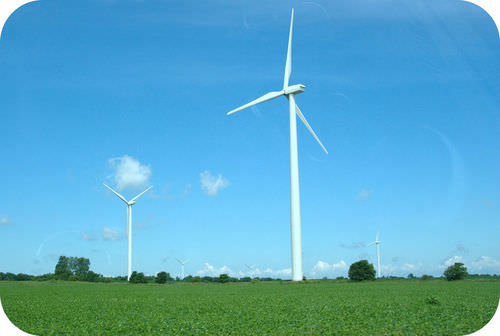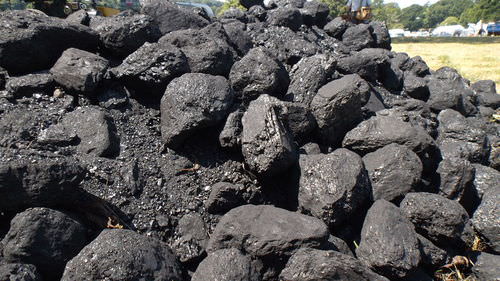6.19: Recursos
- Page ID
- 107945
\( \newcommand{\vecs}[1]{\overset { \scriptstyle \rightharpoonup} {\mathbf{#1}} } \)
\( \newcommand{\vecd}[1]{\overset{-\!-\!\rightharpoonup}{\vphantom{a}\smash {#1}}} \)
\( \newcommand{\dsum}{\displaystyle\sum\limits} \)
\( \newcommand{\dint}{\displaystyle\int\limits} \)
\( \newcommand{\dlim}{\displaystyle\lim\limits} \)
\( \newcommand{\id}{\mathrm{id}}\) \( \newcommand{\Span}{\mathrm{span}}\)
( \newcommand{\kernel}{\mathrm{null}\,}\) \( \newcommand{\range}{\mathrm{range}\,}\)
\( \newcommand{\RealPart}{\mathrm{Re}}\) \( \newcommand{\ImaginaryPart}{\mathrm{Im}}\)
\( \newcommand{\Argument}{\mathrm{Arg}}\) \( \newcommand{\norm}[1]{\| #1 \|}\)
\( \newcommand{\inner}[2]{\langle #1, #2 \rangle}\)
\( \newcommand{\Span}{\mathrm{span}}\)
\( \newcommand{\id}{\mathrm{id}}\)
\( \newcommand{\Span}{\mathrm{span}}\)
\( \newcommand{\kernel}{\mathrm{null}\,}\)
\( \newcommand{\range}{\mathrm{range}\,}\)
\( \newcommand{\RealPart}{\mathrm{Re}}\)
\( \newcommand{\ImaginaryPart}{\mathrm{Im}}\)
\( \newcommand{\Argument}{\mathrm{Arg}}\)
\( \newcommand{\norm}[1]{\| #1 \|}\)
\( \newcommand{\inner}[2]{\langle #1, #2 \rangle}\)
\( \newcommand{\Span}{\mathrm{span}}\) \( \newcommand{\AA}{\unicode[.8,0]{x212B}}\)
\( \newcommand{\vectorA}[1]{\vec{#1}} % arrow\)
\( \newcommand{\vectorAt}[1]{\vec{\text{#1}}} % arrow\)
\( \newcommand{\vectorB}[1]{\overset { \scriptstyle \rightharpoonup} {\mathbf{#1}} } \)
\( \newcommand{\vectorC}[1]{\textbf{#1}} \)
\( \newcommand{\vectorD}[1]{\overrightarrow{#1}} \)
\( \newcommand{\vectorDt}[1]{\overrightarrow{\text{#1}}} \)
\( \newcommand{\vectE}[1]{\overset{-\!-\!\rightharpoonup}{\vphantom{a}\smash{\mathbf {#1}}}} \)
\( \newcommand{\vecs}[1]{\overset { \scriptstyle \rightharpoonup} {\mathbf{#1}} } \)
\( \newcommand{\vecd}[1]{\overset{-\!-\!\rightharpoonup}{\vphantom{a}\smash {#1}}} \)
\(\newcommand{\avec}{\mathbf a}\) \(\newcommand{\bvec}{\mathbf b}\) \(\newcommand{\cvec}{\mathbf c}\) \(\newcommand{\dvec}{\mathbf d}\) \(\newcommand{\dtil}{\widetilde{\mathbf d}}\) \(\newcommand{\evec}{\mathbf e}\) \(\newcommand{\fvec}{\mathbf f}\) \(\newcommand{\nvec}{\mathbf n}\) \(\newcommand{\pvec}{\mathbf p}\) \(\newcommand{\qvec}{\mathbf q}\) \(\newcommand{\svec}{\mathbf s}\) \(\newcommand{\tvec}{\mathbf t}\) \(\newcommand{\uvec}{\mathbf u}\) \(\newcommand{\vvec}{\mathbf v}\) \(\newcommand{\wvec}{\mathbf w}\) \(\newcommand{\xvec}{\mathbf x}\) \(\newcommand{\yvec}{\mathbf y}\) \(\newcommand{\zvec}{\mathbf z}\) \(\newcommand{\rvec}{\mathbf r}\) \(\newcommand{\mvec}{\mathbf m}\) \(\newcommand{\zerovec}{\mathbf 0}\) \(\newcommand{\onevec}{\mathbf 1}\) \(\newcommand{\real}{\mathbb R}\) \(\newcommand{\twovec}[2]{\left[\begin{array}{r}#1 \\ #2 \end{array}\right]}\) \(\newcommand{\ctwovec}[2]{\left[\begin{array}{c}#1 \\ #2 \end{array}\right]}\) \(\newcommand{\threevec}[3]{\left[\begin{array}{r}#1 \\ #2 \\ #3 \end{array}\right]}\) \(\newcommand{\cthreevec}[3]{\left[\begin{array}{c}#1 \\ #2 \\ #3 \end{array}\right]}\) \(\newcommand{\fourvec}[4]{\left[\begin{array}{r}#1 \\ #2 \\ #3 \\ #4 \end{array}\right]}\) \(\newcommand{\cfourvec}[4]{\left[\begin{array}{c}#1 \\ #2 \\ #3 \\ #4 \end{array}\right]}\) \(\newcommand{\fivevec}[5]{\left[\begin{array}{r}#1 \\ #2 \\ #3 \\ #4 \\ #5 \\ \end{array}\right]}\) \(\newcommand{\cfivevec}[5]{\left[\begin{array}{c}#1 \\ #2 \\ #3 \\ #4 \\ #5 \\ \end{array}\right]}\) \(\newcommand{\mattwo}[4]{\left[\begin{array}{rr}#1 \amp #2 \\ #3 \amp #4 \\ \end{array}\right]}\) \(\newcommand{\laspan}[1]{\text{Span}\{#1\}}\) \(\newcommand{\bcal}{\cal B}\) \(\newcommand{\ccal}{\cal C}\) \(\newcommand{\scal}{\cal S}\) \(\newcommand{\wcal}{\cal W}\) \(\newcommand{\ecal}{\cal E}\) \(\newcommand{\coords}[2]{\left\{#1\right\}_{#2}}\) \(\newcommand{\gray}[1]{\color{gray}{#1}}\) \(\newcommand{\lgray}[1]{\color{lightgray}{#1}}\) \(\newcommand{\rank}{\operatorname{rank}}\) \(\newcommand{\row}{\text{Row}}\) \(\newcommand{\col}{\text{Col}}\) \(\renewcommand{\row}{\text{Row}}\) \(\newcommand{\nul}{\text{Nul}}\) \(\newcommand{\var}{\text{Var}}\) \(\newcommand{\corr}{\text{corr}}\) \(\newcommand{\len}[1]{\left|#1\right|}\) \(\newcommand{\bbar}{\overline{\bvec}}\) \(\newcommand{\bhat}{\widehat{\bvec}}\) \(\newcommand{\bperp}{\bvec^\perp}\) \(\newcommand{\xhat}{\widehat{\xvec}}\) \(\newcommand{\vhat}{\widehat{\vvec}}\) \(\newcommand{\uhat}{\widehat{\uvec}}\) \(\newcommand{\what}{\widehat{\wvec}}\) \(\newcommand{\Sighat}{\widehat{\Sigma}}\) \(\newcommand{\lt}{<}\) \(\newcommand{\gt}{>}\) \(\newcommand{\amp}{&}\) \(\definecolor{fillinmathshade}{gray}{0.9}\)
Renovables o no renovables, ¿cuál es la diferencia?
Eso es como preguntar la diferencia entre tener un suministro sin fin y tener un suministro limitado. ¿Este planeta eventualmente se quedará sin petróleo? Probablemente. Entonces el petróleo es un recurso no renovable.
Recursos Renovables y No Renovables
Un recurso natural es algo suministrado por la naturaleza que ayuda a sustentar la vida. Cuando piensas en recursos naturales, puedes pensar en minerales y combustibles fósiles. Sin embargo, los ecosistemas y los servicios que brindan son también recursos naturales. La biodiversidad también es un recurso natural.
Recursos Renovables
Los recursos renovables se pueden reponer mediante procesos naturales tan rápido como los humanos los utilizan. Los ejemplos incluyen la luz solar y el viento. No están en peligro de ser agotados (ver Figura abajo). Los metales y otros minerales también son renovables. No se destruyen cuando se utilizan y se pueden reciclar.
 El viento es un recurso renovable. Las turbinas eólicas como esta aprovechan solo una pequeña fracción de la energía eólica.
El viento es un recurso renovable. Las turbinas eólicas como esta aprovechan solo una pequeña fracción de la energía eólica. Los seres vivos se consideran renovables. Esto se debe a que pueden reproducirse para reemplazarse a sí mismos. Sin embargo, pueden ser sobreutilizados o mal utilizados hasta el punto de extinción. Para ser verdaderamente renovables, deben ser utilizadas de manera sostenible. El uso sustentable es el uso de los recursos de una manera que satisfaga las necesidades del presente y también preserve los recursos para las generaciones futuras.
Recursos no renovables
Los recursos no renovables son recursos naturales que existen en cantidades fijas y pueden ser agotados. Los ejemplos incluyen combustibles fósiles como el petróleo, el carbón y el gas natural. Estos combustibles se formaron a partir de los restos de plantas a lo largo de cientos de millones de años. Los estamos usando mucho más rápido de lo que jamás podrían ser reemplazados. A las tasas actuales de uso, el petróleo se agotará en pocas décadas y el carbón en menos de 300 años. También se considera que la energía nuclear es un recurso no renovable porque consume uranio, que tarde o temprano se agotará. También produce desechos dañinos que son difíciles de desechar de manera segura.
 La gasolina está hecha de petróleo crudo. El petróleo crudo bombeado del suelo es un líquido negro llamado petróleo, que es un recurso no renovable.
La gasolina está hecha de petróleo crudo. El petróleo crudo bombeado del suelo es un líquido negro llamado petróleo, que es un recurso no renovable.  El carbón es otro recurso no renovable.
El carbón es otro recurso no renovable. Convirtiendo la basura en un tesoro
Los científicos del Massachusetts of Technology están convirtiendo la basura en carbón, que puede usarse fácilmente para calentar hogares y cocinar alimentos en países en desarrollo. Este carbón quema más limpio que el de los combustibles fósiles. También ahorra una tremenda cantidad de energía.
Resumen
- Los recursos renovables pueden ser reemplazados por procesos naturales tan rápido como los humanos los usan. Los ejemplos incluyen la luz solar y el viento.
- Los recursos no renovables existen en cantidades fijas. Se pueden agotar. Entre los ejemplos se encuentran los combustibles fósiles como el carbón.
Revisar
- Definir recurso natural. Dé un ejemplo.
- Distinguir entre recursos renovables y no renovables y dar ejemplos.
- Deducir factores que determinan si un recurso natural es renovable o no renovable.
| Im a ge | Referencia | Atribuciones |
 |
[Figura 1] | Crédito: Richard Lewis Fuente: http://www.flickr.com/photos/oatsy40/9333525319/ Licencia: CC BY-NC |
 |
[Figura 2] | Crédito: Patrick Finnegan; Richard Lewis Fuente: http://www.flickr.com/photos/vax-o-matic/2621902438/; http://www.flickr.com/photos/oatsy40/9333525319/ Licencia: CC BY 2.0 |
 |
[Figura 3] | Crédito: flickr:images_of_money Fuente: http://www.flickr.com/photos/59937401@N07/5857082765/ Licencia: CC BY 2.0 |
 |
[Figura 4] | Crédito: Richard Lewis Fuente: http://www.flickr.com/photos/oatsy40/9333525319/ Licencia: CC BY 2.0 |

